- Clone
- L161 (See other available formats)
- Regulatory Status
- RUO
- Workshop
- V T-CD01.18
- Other Names
- R7, M241, BDCA-1
- Isotype
- Mouse IgG1, κ
- Ave. Rating
- Submit a Review
- Product Citations
- publications
CD1c, also known as R7 or M241, is a 43 kD member of the five CD1 antigens (CD1a-e) in humans. The CD1 molecules are type I glycoprotein with structural similarities to MHC class I and are non-covalently associated with β2-microglobulin, belonging to the Ig superfamily. CD1c is expressed on cortical thymocytes, Langerhans cells, dendritic cells, and a subset of B cells. It has been reported that CD1c is also expressed on mature T cells in a tightly regulated manner. CD1c is involved in antigen-presentation of glycolipids. It may also act in T cells as an immune regulatory molecule.
Product DetailsProduct Details
- Verified Reactivity
- Human
- Reported Reactivity
- African Green, Baboon, Cynomolgus, Rhesus
- Antibody Type
- Monoclonal
- Host Species
- Mouse
- Formulation
- Phosphate-buffered solution, pH 7.2, containing 0.09% sodium azide
- Preparation
- The antibody was purified by affinity chromatography and conjugated with Spark Red™ 718 under optimal conditions.
- Concentration
- 0.2 mg/mL
- Storage & Handling
- The antibody solution should be stored undiluted between 2°C and 8°C, and protected from prolonged exposure to light. Do not freeze.
- Application
-
FC
- Recommended Usage
-
Flexi-Fluors™ are provided at a standard 0.2 mg/mL concentration. We recommend titrating this reagent to determine the optimal concentration for each application. For many flow cytometry applications, conjugated antibodies perform well at concentrations ranging from 0.03 to 1.0 µg per million cells in 100 µL. We recommend testing a range of concentrations starting from 10 µg/mL.
For example, make five 1:1 serial dilutions of the 0.2 mg/mL antibody. Add 5 µL of each dilution (including the undiluted antibody) to 100 µL of cells (at 107 cells/mL) to test six concentrations -- 1.0, 0.5, 0.25, 0.125, 0.06, and 0.03 µg per million cells in 100 µL volume. Compare staining patterns or create a titration curve using the MFI or staining index to determine the optimal concentration.
* Spark Red™ 718 has a maximum excitation of 697 nm and a maximum emission of 711 nm. - Excitation Laser
-
Red Laser (633 nm)
- Application Notes
-
Additional reported applications (for the relevant formats) include: immunohistochemical staining on frozen tissue4, 5, formalin-fixed paraffin-embedded immunohistochemical staining6, and spatial biology (IBEX)7,8.
- Additional Product Notes
-
For more information about Flexi-Fluors™, visit our Flexi-Fluor™ page and review FAQs associated with this product line.
-
Application References
(PubMed link indicates BioLegend citation) -
- del C Salamone M, et al. 2001. J Leukoc Biol. 70:567.
- de Fraissinette A, et al. 1988. Exp Hematol. 16:764.
- Li D, et al. 2012. J Exp Med. 209:109. PubMed
- Xu C, et al. 2010. Am J Hematol. 85:539 (IHC-F)
- Gerlini G, et al. 2001. J Invest Dermatol. 117:576 (IHC-F)
- Poposki J, et al. 2016. Clin Exp Allergy 45:384 (IHC-P) PubMed
- Radtke AJ, et al. 2020. Proc Natl Acad Sci USA. 117:33455-33465. (SB) PubMed
- Radtke AJ, et al. 2022. Nat Protoc. 17:378-401. (SB) PubMed
- RRID
-
AB_3106339 (BioLegend Cat. No. 285084)
Antigen Details
- Structure
- 43 kD, Ig superfamily, MHC I-like molecule, associates with β2-microglobulin
- Distribution
-
B cell subset, cortical thymocytes, dendritic cells, and Langerhans cells
- Function
- Presents lipid antigen to CD1c-restricted T cells
- Ligand/Receptor
- CD1c-restricted TCR
- Cell Type
- B cells, Dendritic cells, Langerhans cells, Thymocytes
- Biology Area
- Immunology
- Molecular Family
- CD Molecules
- Antigen References
-
1. Fainboim LM and del C. Salamone. 2002. J. Biol. Reg. Homeos. Ag. 16:125.
2. M. del Salamone C, et al. 2001. J. Leukocyte Biol. 70:567.
3. Zola H, et al. Eds. 2007. Leukocyte and Stromal Cell Molecules:The CD Markers. P42. - Gene ID
- 911 View all products for this Gene ID
- UniProt
- View information about CD1c on UniProt.org
Related Pages & Pathways
Pages
Related FAQs
- What are Flexi-Fluors?
-
Flexi-Fluors are rapidly made-to-order conjugated antibodies. The technology, manufacturing processes, and specifications used to create Flexi-Fluors are the same as our regular catalog products. However, the optimal concentration and performance of each Flexi-Fluor must be determined by the customer.
- How quickly will I receive my order?
-
We aim to ship Flexi-Fluors within 2-3 weeks of receipt of your order. However, depending on your location, shipping times may vary.
- How are Flexi-Fluors different from regular catalog products?
-
Flexi-Fluors are made on demand, specifically for you. Flexi-Fluors are manufactured using the same high-quality standards, and specifications as other catalog products. For faster delivery, Flexi-Fluors are not tested by flow cytometry to determine optimal concentrations or evaluate performance. This testing needs to be performed by the customer.
- How do I determine the optimal concentration for using my Flexi-Fluor? How should I titrate my antibody?
-
Flexi-Fluors are provided at a standard 0.2 mg/mL concentration. We recommend that you titrate your antibody to determine the optimal concentration to use for your application. For many flow cytometry applications, conjugated antibodies perform well at concentrations ranging from 0.03 to 1.0 µg per million cells in 100 µL volume. We recommend that you test a range of concentrations starting from 10 µg/mL.
For example, make five 1:1 serial dilutions of your 0.2 mg/mL antibody. Add 5 µL of each dilution (including the undiluted antibody) to 100 µL of cells (at 107 cells/ml) to test six concentrations - 1.0, 0.5, 0.25, 0.125, 0.06, and 0.03 µg per million cells in 100 µL volume. Compare staining patterns or create a titration curve using the MFI or staining index to determine the optimal concentration.
- I can’t find the antibody-dye combination that I need. When will it be available?
-
We continuously update our catalog, introducing scores of new products every month. Please get in touch with our Technical Service team for an update on new products or recommendations for suitable alternatives to complete your panel. Or contact Custom Solutions to inquire about our affordable custom conjugation services.
- I need help to validate the performance of my Flexi-Fluor. Who should I contact?
-
Please get in touch with Technical Service for assistance.
- Can I order more than 50 μg of a Flexi-Fluor?
-
Yes, you can order multiple vials of the same Flexi-Fluor products. We cannot guarantee, however, that these vials will be bottled from the same lot. For bulk single-lot orders, contact our Custom Solutions team.
- What is the expiration date of my Flexi-Fluor?
-
Expiration dates can be found on the vial label or by using our CoA lookup tool.
Other Formats
View All CD1c Reagents Request Custom ConjugationCompare Data Across All Formats
This data display is provided for general comparisons between formats.
Your actual data may vary due to variations in samples, target cells, instruments and their settings, staining conditions, and other factors.
If you need assistance with selecting the best format contact our expert technical support team.
-
PerCP anti-human CD1c
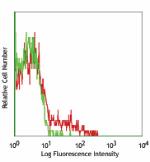
Human peripheral blood lymphocytes stained with L161 PerCP -
Purified anti-human CD1c
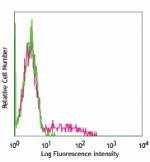
Human peripheral blood lymphocytes stained with purified L16... -
Biotin anti-human CD1c

Human peripheral blood lymphocytes stained with biotinylated... -
PE anti-human CD1c

Human peripheral blood lymphocytes stained with L161 PE 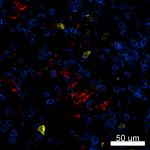
Confocal image of human lymph node sample acquired using the... -
Pacific Blue™ anti-human CD1c
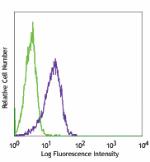
Human T lymphoblastic leukemia cell line, Molt-4, stained wi... -
Alexa Fluor® 647 anti-human CD1c

Human T lymphoblastic leukemia cell line, Molt-4, stained wi... -
PerCP/Cyanine5.5 anti-human CD1c

Human peripheral blood lymphocytes were stained with CD19 AP... -
Brilliant Violet 421™ anti-human CD1c
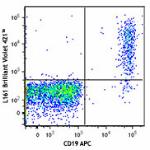
Human peripheral blood lymphocytes were stained with CD19 AP... 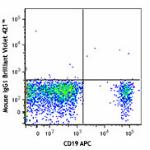
-
PE/Cyanine7 anti-human CD1c
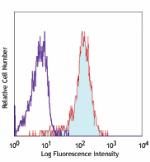
Human T lymphoblastic leukemia cell line Molt-4 stained with... -
FITC anti-human CD1c

Human T lymphoblastic cell line, Molt-4, stained with L161 F... -
APC/Cyanine7 anti-human CD1c

Human peripheral blood lymphocytes stained with CD19 FITC an... -
APC anti-human CD1c
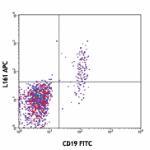
Human peripheral blood lymphocytes were stained with CD19 FI... 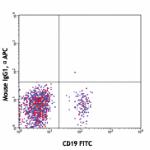
-
Alexa Fluor® 488 anti-human CD1c
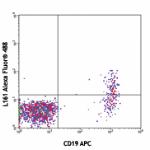
Human peripheral blood lymphocytes were stained with CD19 AP... 
-
Alexa Fluor® 700 anti-human CD1c
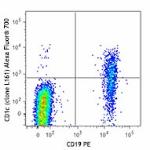
Human peripheral blood lymphocytes were stained with CD19 PE... 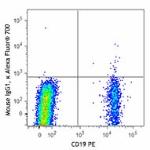
-
PE/Dazzle™ 594 anti-human CD1c

Human peripheral blood lymphocytes were stained with CD19 AP... 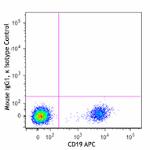
-
Brilliant Violet 510™ anti-human CD1c
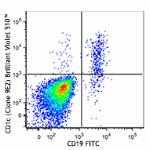
Human peripheral blood lymphocytes were stained with CD19 FI... 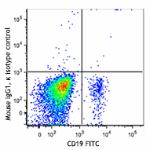
-
Brilliant Violet 605™ anti-human CD1c
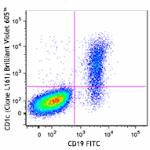
Human peripheral blood lymphocytes were stained with CD19 FI... 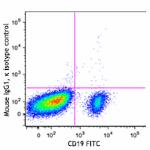
-
Brilliant Violet 711™ anti-human CD1c
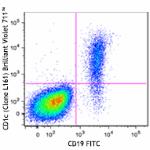
Human peripheral blood lymphocytes were stained with CD19 FI... 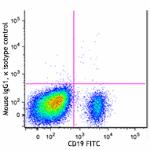
-
TotalSeq™-A0160 anti-human CD1c
-
Brilliant Violet 650™ anti-human CD1c

Human peripheral blood lymphocytes were stained with CD19 FI... -
Brilliant Violet 785™ anti-human CD1c

Human peripheral blood lymphocytes were stained with CD19 FI... -
APC/Fire™ 750 anti-human CD1c

Human peripheral blood lymphocytes were stained with CD19 PE... -
TotalSeq™-C0160 anti-human CD1c
-
TotalSeq™-B0160 anti-human CD1c
-
TotalSeq™-D0160 anti-human CD1c
-
PE/Cyanine5 anti-human CD1c

Human peripheral blood lymphocytes were stained with HIB19 F... -
Spark Red™ 718 anti-human CD1c (Flexi-Fluor™)

 Login / Register
Login / Register 













Follow Us